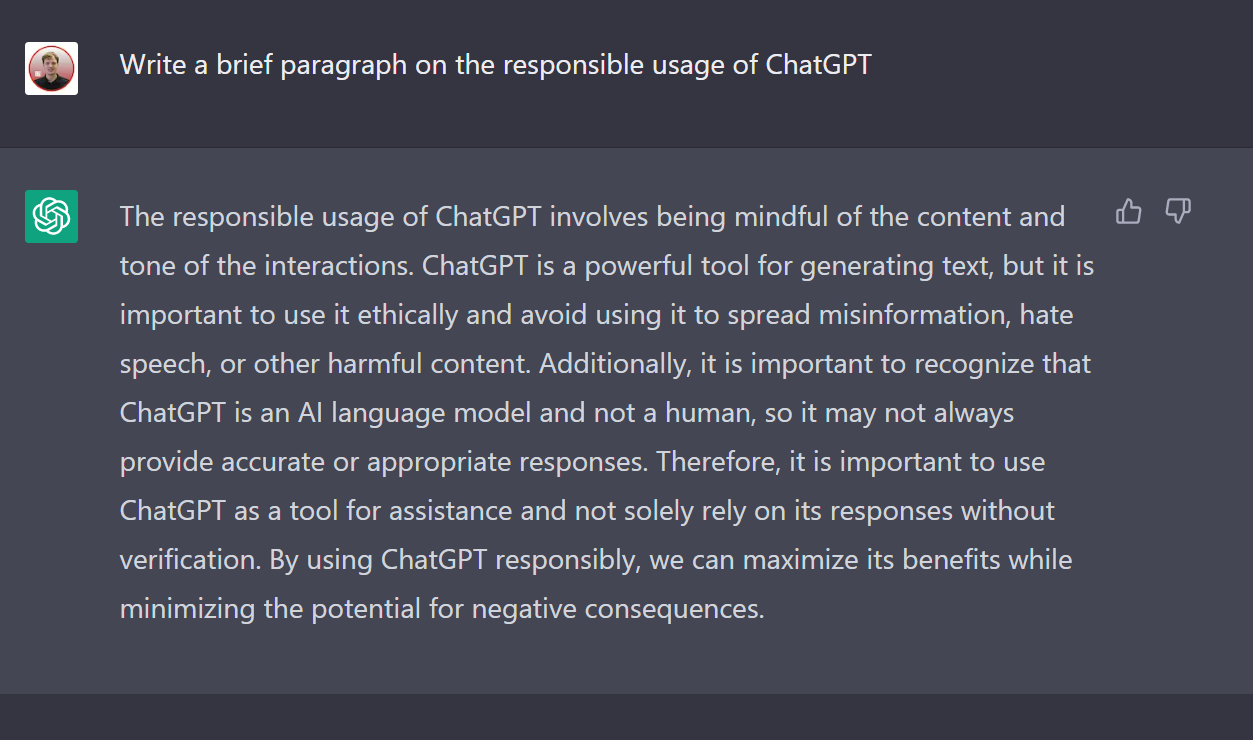If you’ve spent more than 30 seconds on the internet in the last month, it’s safe to assume you’ve heard the chatter surrounding artificial intelligence (AI) and its increasing number of applications across copywriting, scientific pursuits, and even the arts.
Microsoft recently stole the search spotlight with the reveal of an AI-centric version of Bing, and Google quickly followed suit (perhaps a little too quickly). Some AI models have been successfully passing college exams, and models such as DALL-E 2 and Stable Diffusion have been able to produce artistic images with remarkable proficiency (although this has understandably been the subject of much controversy.)
For better or worse, we’re amid a technological and cultural revolution that has long been fantasized about, feared, and hypothesized over. At the center of this conversation has been one model in particular. It’s widely accessible (provided you catch it when the servers aren’t overloaded), remarkably verbose, and easy to use. I’m talking about OpenAI’s ChatGPT.
What is ChatGPT, exactly?
ChatGPT is an AI-based chatbot designed to answer a wide range of questions on various topics. It uses natural language processing and machine learning algorithms to understand and respond to user queries. ChatGPT is a part of the OpenAI project, which is aimed at developing advanced artificial intelligence technologies for various applications. ChatGPT can be used to answer factual questions, provide explanations on various subjects, and assist with various tasks, among other things.
Fun fact: I didn’t write any of the above paragraph. I simply asked ChatGPT (which identifies itself in conversation as “Assistant”) to tell me about itself, and that’s what it gave me on the fly. Obviously, it would have no difficulty talking about itself, but still pretty human, right?
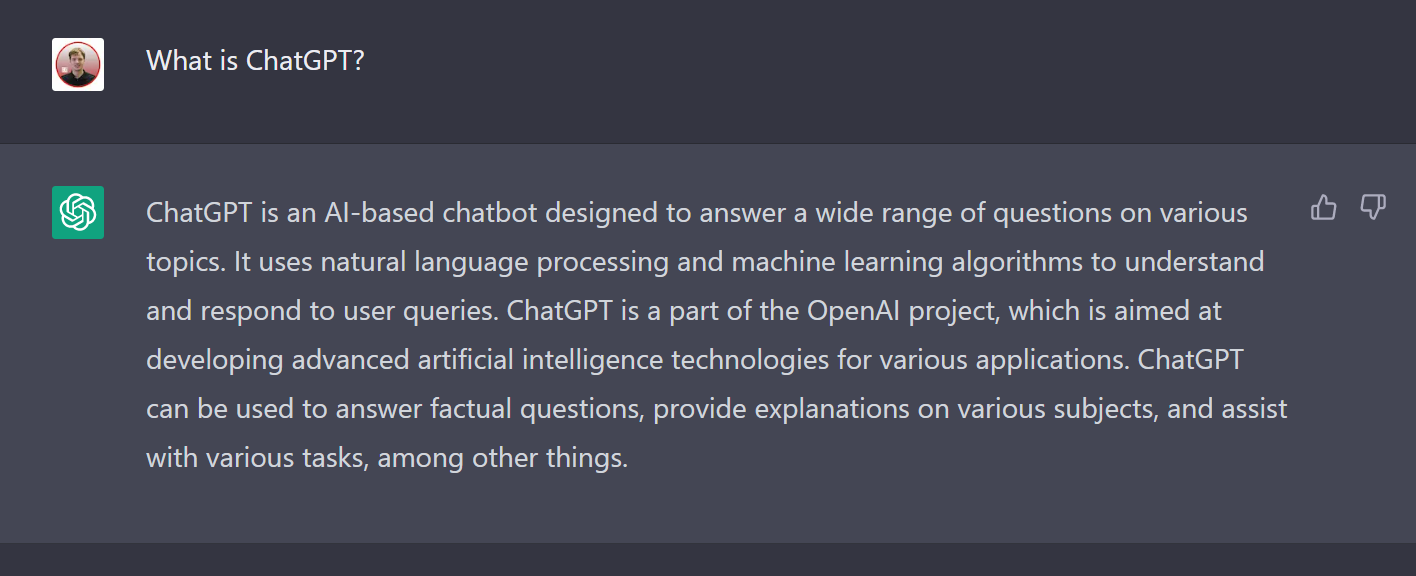
By knowing the right kinds of questions to ask and the limitations at play, ChatGPT is an incredibly powerful tool for researching topics and writing content. The technical nature of ChatGPT and its answers are highly complex and undoubtedly something that OpenAI will mostly keep under wraps. Still, you can gain certain insights about its function and uses just through experimentation, and I’ve shared some of those below.
An Important Disclaimer
While I will share more detailed thoughts later in this post about the shortcomings of ChatGPT, I feel it’s important to take a moment to unequivocally state that ChatGPT should not be relied on to create content without human review and editing. Always carefully review any answers you receive, and edit where needed for accuracy and originality before publishing.
Though it’s tempting, you won’t do yourself any favors copying and pasting straight from ChatGPT. Google has already established its position on preventing low-effort AI content from dominating search results (I also touched on this in my post about the bevy of September algorithm updates). Additionally, its knowledge base only consists of information from 2021 and earlier at the time of writing, so be sure to carefully review answers to prompts based on current events or frequently changing subjects.
Due to these limitations, and the nature of AI in general, factual inaccuracies and biases may make themselves present in responses from ChatGPT. Be sure to carefully and critically look over any information it gives you before you run with it.
On the more human side, ChatGPT and other such tools also have a very robotic tone of voice that can be dull to read at best, and straight-up misleading at worst. Use caution and discretion, and remember the human!
Oh, and one other important thing — don’t share any personal or sensitive information in ChatGPT, as conversation logs are occasionally viewed by “trainers” to see how requests are being handled.
Some Practical Use Cases for ChatGPT
Expanding on Short Content
In my experience, ChatGPT excels at taking small excerpts or lists of information and expanding them into more robust and detailed passages. While working with a client on a blog post for their site, I took a bulleted list of talking points they sent me and fed it to ChatGPT to see if it could build a more detailed description.

While this passage definitely needed a human touch before it was ready for posting, it still did a great job of expanding on the info and giving us more talking points on the topic. Something like this is great if you’re feeling a bit of writer’s block and may even inspire you to explore sub-topics you didn’t initially cover.
Aggregating Information
ChatGPT can take multiple passages or pages and re-form them into a singular piece of content, which is beneficial if you’re trying to merge various pages/blogs into something larger, or consolidate content on a site.
Here’s an example. One of our clients, a golf resort, has information for a particular lodging option spread across several pages. We wanted to see if ChatGPT could give us a head start in aggregating that info into one page.
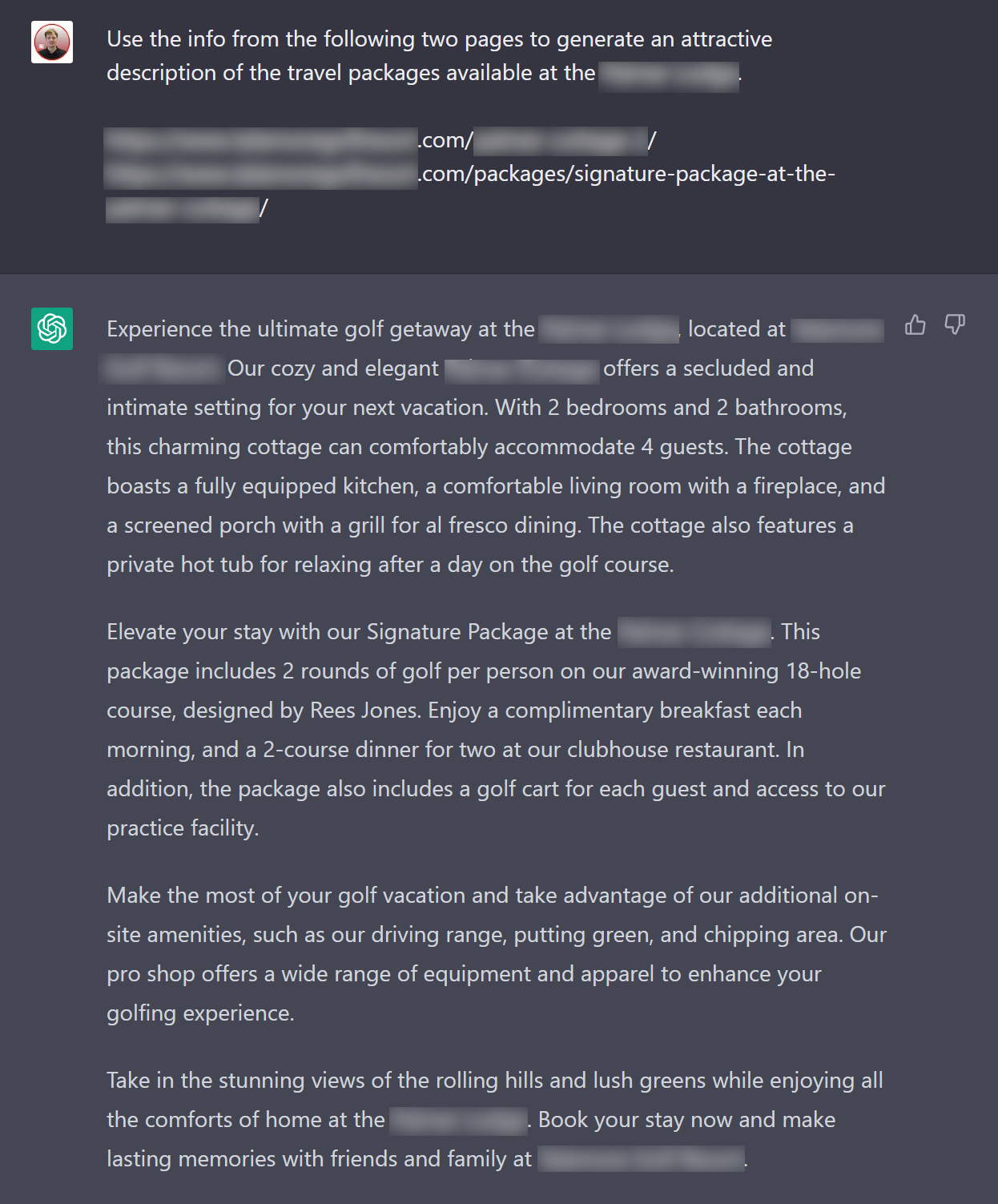
What resulted is an excellent summary for us to start with when restructuring the info, but there’s something even more remarkable about this response. Neither of the pages we included in the original prompt mentioned Rees Jones or the 2-course dinner, meaning ChatGPT inferred that info from its knowledge of the site outside of that prompt. Doing so gave us a great opportunity to bolster the “sales pitch” for this travel package by mentioning features we might not have thought of before.
A quick disclaimer about this: I’ve had varying degrees of success in asking ChatGPT to work with info directly from a webpage. The tool cannot actively crawl a page upon request (yet), so data about a webpage and its contents would be subject to the same “2021 and earlier” limitation. As always, be sure to review carefully.
Keyword/Topic Ideas (Or: Putting Yourself in Your Customers’ Shoes)
While SEOM has all kinds of keyword research gadgets in our toolbox, there’s always room for more, and ChatGPT has provided an interesting new method of approaching that. Since the Assistant is designed to be “conversational,” it can give insight in a way that not only skips the intricacies of rigorous keyword research, but allows you to put yourself in the shoes of a potential customer asking a question.
Here’s an example we ran for a client that specializes in daycare injury cases:
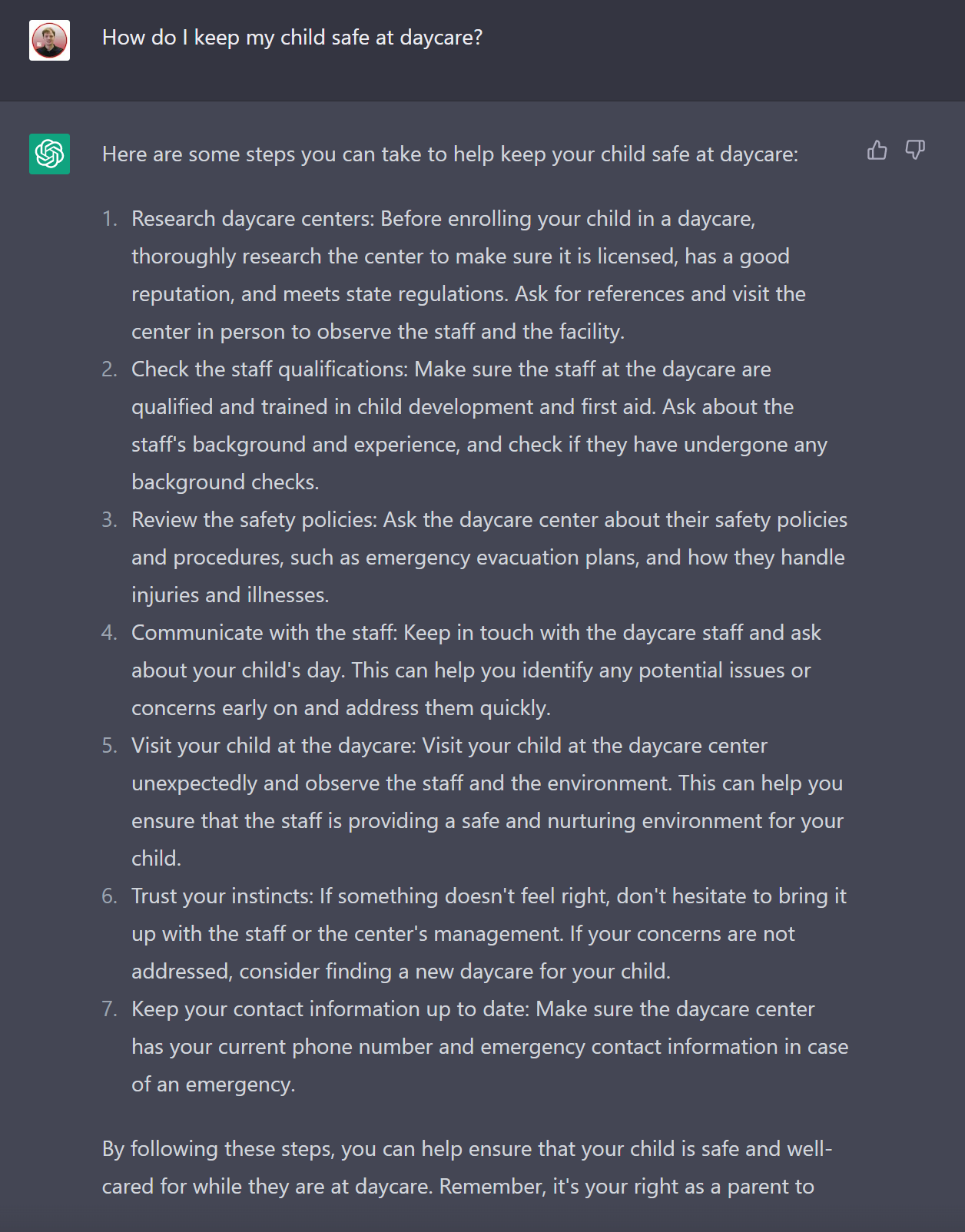
(That cutoff at the bottom isn’t sloppy screenshotting — Assistant actually just stopped talking because of a server issue. Whoops.)
In running this prompt, we’ve generated a helpful and conversational list of topics that will likely cross any parents’ minds when sending their kids off to daycare.
Some of the valuable content we can generate on the subject now includes:
- What credentials should I look for in a daycare center?
- What qualifications should daycare staff have?
- What are the professional requirements for daycares in my state?
I often recommend my clients think about the questions they get from customers in person. Knowing these FAQs helps us develop content around it since there’s a good chance they’d be Googling it, too. This method is effectively a reverse approach to that, and you can use it for any number of topics relating to your business. Hopefully, the OpenAI servers will hang in there long enough to finish answering.
The Shortcomings We’ve Seen
Factual Inaccuracy
Perhaps the biggest can of worms currently being opened in conversational AI is factual correctness, and that debate is just getting started. The issues here are twofold:
- In aiming to produce a satisfying answer from the myriad sources in its database, particularly on topics with differing viewpoints, ChatGPT could get “confused” or miss out on nuances that are part of the complete picture.
- The internet is rife with misinformation, both accidental and deliberate, and there’s a risk that information will get sucked into one of ChatGPT’s answers.
ChatGPT itself warns that information it provides may be inaccurate, so always be sure you carefully fact-check anything ChatGPT tells you before running with it for content.
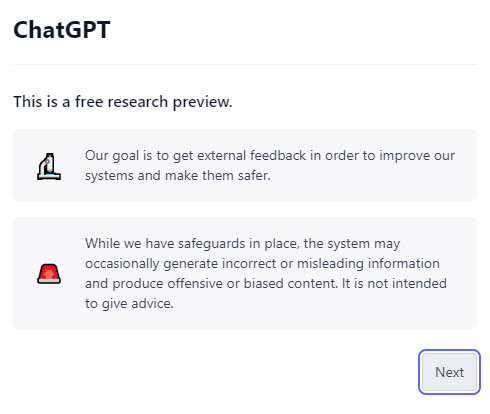
Societal Biases and Prejudices
At their core, models such as ChatGPT are trained on human speech, research, and existing works of art and text to build their knowledge base. The inherent issue with this is that the models can be prone to reflecting biases and prejudices within that vast sum of human dialogue and media on the internet.
Though this falls a bit outside the realm of ChatGPT itself, an excellent article by Slate shows that image-generation AI models seem to overwhelmingly portray white people in images generated from prompts — unless you add biased qualifiers like “poor” to the prompts.
On the more extreme end, an AI-generated spoof of Seinfeld was recently given a temporary ban from Twitch for making transphobic comments after a technical issue forced its creators to fall back on a less sophisticated OpenAI model than what is currently utilized by ChatGPT.
To be entirely clear: neither of these cases represents intentional behavior by each model’s respective programmers, and they’ve reiterated as much. Instead, it’s another important example of the things that can slip through the cracks, given the partially “communal” nature of the knowledge base that these models are drawing on.
Robotic Speech
You’ve probably noticed my interactions with Assistant come across as a bit… robotic. Without diving into the many nuances of human speech, the simple version is that by aiming to be so perfectly human, ChatGPT often presents things in a very “by numbers” manner that lacks personality (try reading any of its responses out loud, fully observing all the punctuation, and you’ll see what I mean). Ultimately, this makes your content less satisfying to readers and reflects negatively on the way you speak with customers. When using content from ChatGPT, the editing process should always include an audit of how the text comes across conversationally.
Where Do We Go From Here?
For better or worse, the advent of ChatGPT and other similar language models will someday be looked back on as a pivotal moment in the history of online search. How they’ll be utilized on a larger scale by businesses and consumers alike is yet to be seen.
Still, by getting to know some of its ins and outs, we’ve already gained a pretty good head start at (responsibly) utilizing it for our own purposes — most of which we hope will benefit our clients.
As always, the team here at SEOM Interactive is staying on top of this critical moment in search as it develops, and encourage you to get in touch with us if you have any questions.
That was a lot of words, and I’m running out of steam, so I’m going to let Assistant take it from here:
